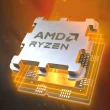Nvidia’s meteoric rise from a modest graphics chip manufacturer to a global leader in computing technology is a tale of innovation, strategic foresight, and relentless pursuit of excellence. Founded in 1993 by Jensen Huang, Chris Malachowsky, and Curtis Priem, Nvidia initially focused on creating graphics processing units (GPUs) for the burgeoning video game industry. The company’s vision and strategic decisions have since positioned it at the forefront of several transformative technological trends, including artificial intelligence (AI), autonomous vehicles, and high-performance computing.
In its early years, Nvidia carved out a niche by developing the GeForce series of GPUs, which quickly became synonymous with high-performance gaming graphics. The release of the GeForce 256 in 1999 marked a significant milestone as it was the world’s first GPU, a term Nvidia coined to describe a chip capable of processing at least 10 million polygons per second. This innovation revolutionized computer graphics, enabling more complex and realistic visuals, which solidified Nvidia’s reputation in the gaming industry.
Nvidia’s Ascent
Nvidia’s ascent was not just about creating powerful hardware but also about developing a robust ecosystem around its products. The company invested heavily in software development, including the creation of CUDA (Compute Unified Device Architecture) in 2006. CUDA allowed developers to leverage the parallel processing power of Nvidia GPUs for general-purpose computing, significantly boosting performance in fields like scientific research, financial modeling, and medical imaging. This strategic pivot transformed Nvidia GPUs from being solely graphics accelerators to essential tools in various computationally intensive industries.
Nvidia’s influence extends beyond gaming and AI. The company has made significant strides in the automotive sector with its DRIVE platform, which provides the hardware and software needed for autonomous vehicles. By partnering with major car manufacturers and tech companies, Nvidia is helping to pave the way for the future of transportation. Its technology enables cars to perceive and navigate the world with a level of precision and reliability that was previously unattainable.
The Rise of AI
The rise of AI and deep learning in the 2010s provided another monumental opportunity for Nvidia. The company’s GPUs, with their parallel processing capabilities, proved to be exceptionally well-suited for training deep neural networks. Nvidia capitalized on this by developing the Volta architecture and Tensor Cores, which are specifically designed for AI workloads. These innovations made Nvidia the go-to provider of hardware for AI research and deployment, leading to widespread adoption in data centers around the world.
Growth by Acquisition
Nvidia’s strategic acquisitions have played a crucial role in its growth. The purchase of Mellanox Technologies in 2020 for $6.9 billion expanded Nvidia’s capabilities in high-performance networking, further cementing its position in data centers. The acquisition of ARM, a leading designer of CPUs, if completed, promises to broaden Nvidia’s reach into the realm of mobile devices and IoT (Internet of Things), creating a comprehensive ecosystem spanning from edge to cloud.
Financially, Nvidia’s performance has been nothing short of extraordinary. The company’s stock has seen exponential growth, reflecting investor confidence in its ability to innovate and dominate emerging markets. As of 2023, Nvidia’s market capitalization ranks it among the most valuable technology companies globally, a testament to its strategic vision and execution.








